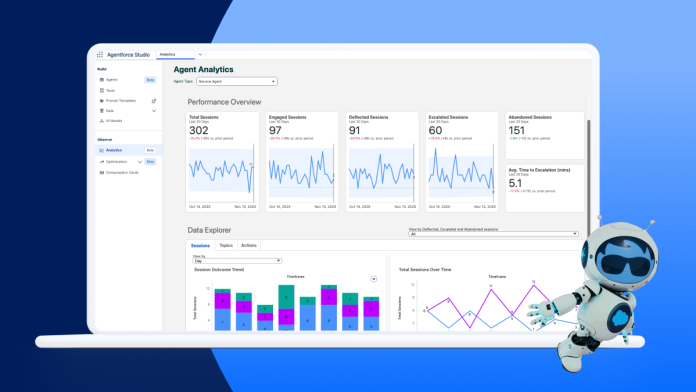Salesforce has announced new observability tools designed to enhance the performance and monitoring of AI agents within their Agentforce platform. For small business owners, this development represents a significant opportunity to optimize their use of AI, streamline customer interactions, and ultimately drive better decision-making in real-time.
With the deployment of AI agents becoming increasingly common, small businesses may encounter challenges in understanding their functionality post-launch. As these agents handle live transactions, they often operate like "black boxes," producing results but offering little insight into the reasoning behind their actions. This lack of visibility can slow down the fine-tuning process, erode trust, and make scaling an expensive gamble.
Salesforce’s new tools aim to provide the granularity and transparency needed to address these challenges. By integrating observability into the AI agent lifecycle, businesses can ensure that the process of optimization and performance monitoring doesn’t stop after deployment. Adam Evans, Executive Vice President and General Manager of Salesforce AI, emphasized the necessity of such tools: “As AI adoption accelerates, the biggest enterprise challenge will no longer be about building an organization’s first agent; it will become how to best manage a fleet of agents making real-world business decisions. You can’t scale what you can’t see.”
Small business owners can expect several key benefits from the new observability tools within the Agentforce 360 Platform. First, the Agent Analytics feature will allow companies to monitor the performance of their agents continuously. Metrics related to usage and effectiveness can help identify trends over time, showing which areas may need attention or adjustments.
In addition, the Agent Optimization tools enable businesses to trace agent interactions and understand the decision-making paths of their AI. By analyzing these behaviors, companies can quickly identify and correct performance gaps, enhancing overall efficiency. This clarity can lead to better customer interactions, as enterprises gain insights into every step an AI agent takes, which Ryan Teeples, Chief Strategy Officer of 1-800Accountant, attests to: “With full visibility into every agent interaction, we can see exactly how our AI handles each request, step by step.”
Furthermore, Agent Health Monitoring ramps up reliability by providing near-real-time visibility into the performance of deployed agents. Understanding key health metrics allows businesses to preemptively resolve issues, reducing potential downtime during peak operational hours. These combined features aim to provide small businesses with the tools they need to foster a trustworthy relationship with their AI systems—a crucial aspect as the demand for effective customer service continues to rise.
Despite the advantages of adopting these observability tools, small business owners must also recognize potential challenges. The integration of advanced AI functionalities may require updates to existing systems, staff training, and a shift in company culture toward data-driven decision-making. Moreover, the need for continuous monitoring could create additional responsibilities for IT teams.
The practices established through these observability tools also mean that businesses require sufficient infrastructure to make the most of the insights provided. In the current landscape of rising AI implementation—reported at a staggering 282%—the importance of maintaining operational rigor cannot be overstated.
Salesforce is mindful of these realities, and their new observability solutions are part of a strategy to ensure businesses can safely scale AI while maintaining confidence in their performance. The tools are designed not just for deployment but as ongoing solutions for optimization and management—an essential consideration for small businesses looking to remain competitive in a crowded market.
Organizations like Engine and Nexo have already seen positive impacts from these tools. Engine’s VP of Customer Experience and Operations, Demetri Salvaggio, noted that the observability features have allowed his company to expand AI’s role into various departments without increasing headcount. This highlights a potential benefit for small businesses, where resources often remain tight.
As Salesforce begins a phased rollout of these tools—starting with the Agent Analytics and Optimization features available now and full health monitoring by Spring 2026—small business leaders should consider how they can leverage these advancements to enhance their operations.
The new tools will be made available in regional phases for customers in EMEA and APAC, allowing for tailored implementation strategies. For small businesses ready to take the leap into more sophisticated AI management, these observability tools could be instrumental in transforming how they operate, interact with customers, and ultimately grow.
For more details, you can read the original announcement from Salesforce here.
Image Via Salesforce



